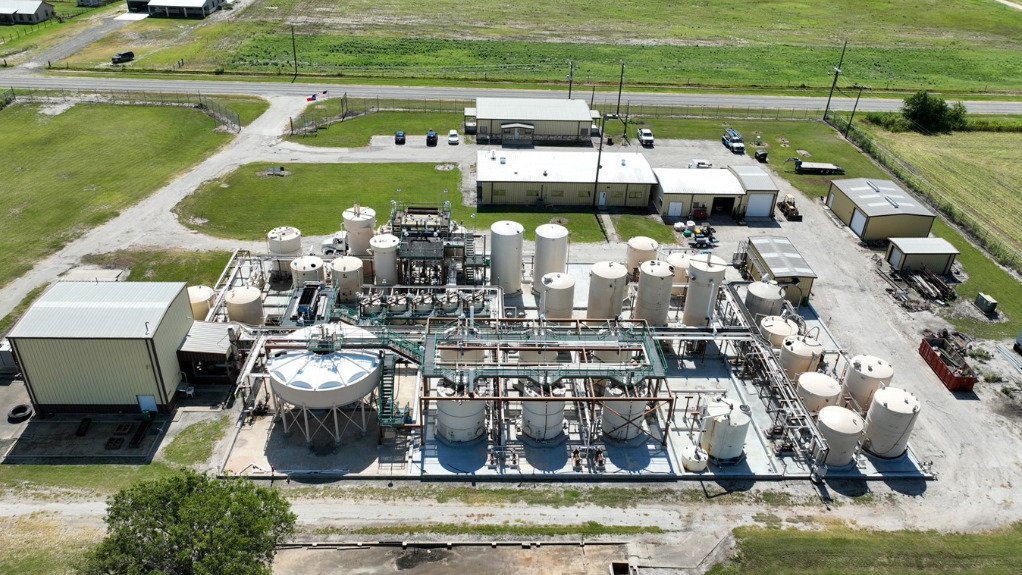Uranium firms revive forgotten mines as price of nuclear fuel soars


Production has not kept pace due to years of underinvestment, says Texas-based UEC
Across the US and allied countries, owners of left-for-dead uranium mines are restarting operations to capitalize on rising demand for the nuclear fuel.
At least five US producers are reviving mines in states including Wyoming, Texas, Arizona and Utah, where production flourished until governments soured on the radioactive element following the 2011 Fukushima nuclear disaster in Japan.
Most of those American mines were idled in the aftermath of Fukushima, when uranium prices crashed and countries like Germany and Japan initiated plans to phase out nuclear reactors.
Now, With governments turning to nuclear power to meet emissions targets and top uranium producers struggling to satisfy demand, prices of the silvery-white metal are surging. And that’s giving those once-unprofitable uranium operations a chance to fill a supply gap.
Uranium has been used as an energy source for more than six decades, fueling nuclear power plants and reactors. About two-thirds of global production comes from Kazakhstan, Canada and Australia.
Uranium will be a topic of conversation as thousands of mining executives, geologists and bankers descend on Toronto for the Prospectors & Developers Association of Canada gathering this week. The annual event has attracted at least 10 uranium firms, including Denison Mines, Fission Uranium and IsoEnergy.
As countries increasingly consider nuclear power to address climate change, demand for uranium is expected to skyrocket. The International Atomic Energy Agency estimates the world will need more than 100 000 metric tons of uranium per year by 2040 — an amount that requires nearly doubling mining and processing from current levels.
Canada’s Cameco and Kazakhstan’s Kazatomprom, which together account for half of global supply, have struggled to ramp up production. They have warned of some operational setbacks that will result in less uranium output than expected in the coming years.
“We’re in an old-fashioned, plain-and-simple supply squeeze,” said Scott Melbye, executive vice president of Texas-based Uranium Energy. “Demand is increasing again, with new reactors coming online.”
Production hasn’t kept pace due to years of underinvestment in mining and exploration, said Melbye, whose company is reopening mines in Wyoming and Texas that were idled in 2018.
Energy Fuels Inc. initiated plans late last year to restart operations in Arizona, Utah and Colorado, while Ur-Energy Inc. said it will dust off an idled mine in Wyoming. Mid-sized companies in Australia and Canada have announced similar plans.
To be sure, production from these mines — most of which are small and nearing the end of their lives — would comprise a small fraction of the world’s uranium supply.
“The industry is clearly trying to respond with smaller mines reopening, but when you have a mine that hasn’t operated for that long, it’s obviously not very substantive,” said John Ciampaglia, Chief Executive Officer of Sprott Asset Management, which operates the Sprott Physical Uranium Trust.
TOP PRODUCERS
Supply constraints should ease with top producers churning out the millions of pounds of uranium they left in the ground when prices were low. Kazatomprom has been increasing output after years of operating well below its capacity.
Cameco has been ramping up production at the world’s largest high-grade uranium mine and mill — MacArthur River and Key Lake in the western Canadian province of Saskatchewan — after idling operations between 2018 and 2021 due to weak market conditions.
The two firms “will be very concerned about losing their market share to a bunch of juniors, and so they’ll want to claim that back,” said Tom Price, a senior commodities analyst at London-based investment bank Libereum. “That will take a lot of heat out of the market.”
Still, US mine reopenings mark a revival for an American industry that was at risk of disappearing only five years ago. American uranium production hit an all-time low of 174 000 pounds in 2019 — a drop from its 44-million-pound peak in 1980 — as the US started increasing dependence on imports from countries like Canada, Australia, Kazakhstan and Russia.
The US industry’s push is also political, with the government seeking to secure access to supply amid geopolitical uncertainty. Sanctions on Russia following its 2022 invasion of Ukraine have posed challenges for uranium shipments en route from Kazakhstan, since the former Soviet state’s exports typically pass through Russian ports.
To keep up with demand, the Uranium Producers of America forecasts the US will need eight to 10 new, major mines to start production over the next decade.
Comments
Press Office
Announcements
What's On
Subscribe to improve your user experience...
Option 1 (equivalent of R125 a month):
Receive a weekly copy of Creamer Media's Engineering News & Mining Weekly magazine
(print copy for those in South Africa and e-magazine for those outside of South Africa)
Receive daily email newsletters
Access to full search results
Access archive of magazine back copies
Access to Projects in Progress
Access to ONE Research Report of your choice in PDF format
Option 2 (equivalent of R375 a month):
All benefits from Option 1
PLUS
Access to Creamer Media's Research Channel Africa for ALL Research Reports, in PDF format, on various industrial and mining sectors
including Electricity; Water; Energy Transition; Hydrogen; Roads, Rail and Ports; Coal; Gold; Platinum; Battery Metals; etc.
Already a subscriber?
Forgotten your password?
Receive weekly copy of Creamer Media's Engineering News & Mining Weekly magazine (print copy for those in South Africa and e-magazine for those outside of South Africa)
➕
Recieve daily email newsletters
➕
Access to full search results
➕
Access archive of magazine back copies
➕
Access to Projects in Progress
➕
Access to ONE Research Report of your choice in PDF format
RESEARCH CHANNEL AFRICA
R4500 (equivalent of R375 a month)
SUBSCRIBEAll benefits from Option 1
➕
Access to Creamer Media's Research Channel Africa for ALL Research Reports on various industrial and mining sectors, in PDF format, including on:
Electricity
➕
Water
➕
Energy Transition
➕
Hydrogen
➕
Roads, Rail and Ports
➕
Coal
➕
Gold
➕
Platinum
➕
Battery Metals
➕
etc.
Receive all benefits from Option 1 or Option 2 delivered to numerous people at your company
➕
Multiple User names and Passwords for simultaneous log-ins
➕
Intranet integration access to all in your organisation


















